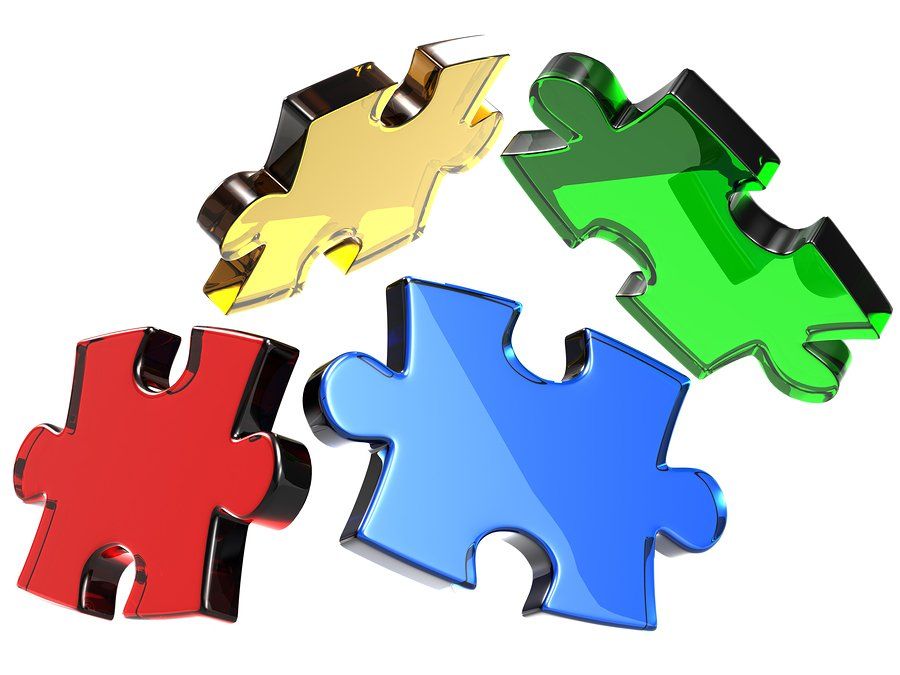Types of Possession:A-Class versus O-Class
Possessing Things
Things can be possessed by people:
- The man's car, the woman's child, her camera, Iokepaʻs house
Things can be possessed by animals:
- The dogs ball, the cats toy, the horse's corral, the bird's nest
Things can be possessed by inanimate objects:
- The tree's leaves, the waves of the ocean, the lava of the volcano
Animate objects can be possessed by inanimate objects:
- The children of the land, the school's students, the employees of the store
When the various types of possession are considered there are two fundamental characteristics that are part of what divide them into two categories (A-Class and O-Class). First, in some cases the possessor is in control of the thing possessed (A-Class) and can give it away if they choose to do so. In other cases the possessor has no control over the ownership and state of possession of the thing possessed (O-Class). The second characteristic is related to the first but focuses on the fact that some things simply take or have possession of something and they have no volition. A tree has leaves, a store has employees. The tree and the store have no agency, they simply have what they have. They have no control over the state of possession.
The A-Class and O-Class Possessive Relationship
There are two ways in which something can be referred to as someone or somethings possession. A thing can be an A-Class or O-Class possession. From an academic perspective, these are referred to as “kino ʻā” and “kino ʻō” possessive classes. The general semantic distinction between the two classes is a subject of academic debate but it's generally agreed that A-Class implies the presence of control in the relationship between possessor and the thing possessed. O-Class implies that the possessor has no control over the possessive relationship.
A-Class = CONTROL O-Class = NO CONTROL
Inanimate possession: One inanimate object possesses another. For example: Nā pōhaku o ka ʻāina (the rocks of the land). The inanimate rocks are possessed by the inanimate land. Neither has any agency (control) in the possessive relationship.
In the study of A-Class/O-Class possession it's important to remember that the Hawaiian language has undergone what linguists refer to as “levelling.” In the generations following European contact the language has moved towards a structured, grammatically-based system. As a consequence, some of the subtle semantics (underlying meaning and implication) has been obscured or lost.
Things which are possessed as A-Class or those where the possessor controls the relationship between the possessor and the thing possessed. The possessor causes or instigates the possessive relationship. O-Class things are those in which the possessor lacks control in terms of the creation of the possessive relationship. Additionally, O-Class possession is used when the possessor is located in, on, at, or under the thing possessed. In other words, the possessor is in possession of the location created by the thing. They possess the space, not necessarily the thing itself. In the context of possessing a location, consider an umbrella: ka māmalu. If I'm sitting under the umbrella it's koʻu māmalu. I'm sitting in the space created underneath the umbrella. If I have a store and I sell umbrellas then they are kaʻu māmalu. In this case the umbrella is simply a thing that is possessed (A-Class) and is not creating a space for me to possess (O-Class).
Possession is considered A-Class or O-Class based on the relationship between the possessor and the possessed thing. It is not based on what the thing is. There is nothing in English grammar that directly corresponds to the Hawaiian concept of A-Class versus O-Class possession. Since the mid-1800s, there has been much study, discussion, and speculation about strictly how A-Class or O-Class should be applied.
It has been generally agreed that if the possessor has no control over the relationship to the thing possessed, it is an O-Class possession. This is referred to as “inalienable possession,” in other words, you can't break the possessive state. Your possession of a mother and a father is a classic example. You speak of “koʻu makuahine” with O-Class possession because the relationship between you and your mother is inalienable. It can't be taken away from you or given away by you. It's important to note that the focus is on the relationship itself between the possessor and thing possessed, not the thing itself. That which you have no control over (that which is inalienable) in O-Class possession is the relationship.
There are many cases where O-Class possession is used, but the control of the relationship is not immediately evident. Consider the possession of canoes (koʻu waʻa – my canoe.) Possession of a canoe is O-Class, unlike possession of many other forms of property, which are A-Class. A possessor of a canoe controls the possession; the canoe could be sold or given away. Nonetheless, it is O-Class possession. It's taught that if you get into or onto something it's O-Class possession (like canoes, cars, horses). This is referred to as "locational possession", you possess the space that you occupy when you're in or on the thing.
Locational Possession
It is taught that O-Class possession is inalienable and refers to a thing that you get into or on. That “rule” covers canoes, houses, cars, and other similar things. The “rule” has more depth than simply “get into or on.” What is in focus in the “into/on” rule is the idea that a “location” is possessed. The canoe, the house, and the car are all places you use (that you sit in to fish or travel, that you live in, that you drive in.) It is in this sense that they represent a location and, thus, are O-Class possessions. The concept of “locational possession” (Locative Genitive possession) is complicated, and the nuances are not immediately apparent.
In this context, things could be viewed as objects in themselves or as locations relative to other objects. “Location” in this context is a characterization of the intended use by the owner. The O-Class possessor intends to use the object in a specific location or relationship to something else in space. For example:
- Koʻu māmalu – my umbrella (you possess it to sit under it; if you had it in inventory in your store, it would be kaʻu māmalu)
- Koʻu lio – my horse (you possess it to sit on top of it and ride it; if it were a wild horse in a herd that you purchased, it would be kaʻu lio)
- Koʻu uluna – my pillow (you possess it to put your head on it; if it were a pillow you made as a gift, it would be kaʻu uluna)
- Koʻu wai lukini – my perfume (you possess it to apply it to your body; if you purchased it as a gift, it would be kaʻu wai lukini)
The concept of possessing a location also includes the idea that the O-Class location must have been realized. In other words, you can purchase a bar of soap for your own use (kaʻu kopa) but, until you actually apply it to your body (move it to its intended, possessed location), it doesn't become koʻu kopa.
Possession Between Living and Non-Living Things
Another type of O-Class possession is between two non-people (two things, places, animals). For example, “nā hale o Maui” (the houses of Maui) or “nā lāʻau o ka manu” (the tree of the bird). The possessor (Maui, the bird) has no control over the possessive relationship and is O-Class.
Living beings (including humans) have no control over the possession of their body parts and things produced by the body (feces, urine, sweat, saliva). These are O-Class possessions: koʻu lima, koʻu lauʻoho, koʻu mimi. There are cases where possession is the result of someone else's action. Your parents were the ones who gave you your name. A photographer gave you a picture of yourself. Someone wrote a song in dedication to someone else. In each case, you possessed the thing as a result of an agent (the person who gave it to you.) Examples are:
- Koʻu inoa, kou inoa – my name, your name
- Koʻu kiʻi – my picture (a picture of me)
- Koʻu mele – a song dedicated to me
- Koʻu lei – a lei given to me
- Koʻu makua – my parent
Notice that in many cases where an agent created the possessive state, there was a time when the thing was physically with the agent (before they gave it to you). During that time, the agent possesses the thing, but they have control over it; they can give it to you. At that time, the possession is A-Class, it is alienable, and the thing is under control of the possessor. Consider:
- Kaʻu kiʻi – my picture (a picture I took with my camera, or painted, but not a picture of me)
- Kaʻu mele – my song not dedicated to me (perhaps the one I'm planning on singing as a performer)
- Kaʻu lei – a lei that I made and I'm planning on giving to you or selling
- Kaʻu kaʻa – my car that I'm trying to sell in my role as a car salesman
A possessive relationship that the possessor causes to occur or instigates is considered to be controlled by the possessor and is A-Class. For example:
- Kaʻu wahine – my wife (you chose to date, you took actions that cause the marriage to occur)
- Kaʻu keiki – my child (you chose to perform the necessary actions to create your child)
- Ka hua a ka moa – the chicken's egg (the chicken caused the egg to come into existence)
Anytime the possessor completely controls ownership of a thing, it is A-Class possession. For example:
- Kaʻu peni – my pen
- Kaʻu pōpoki – my cat
Selective Use of O-Class and A-Class Possession
As explained in the text above, some situations use O-Class or A-Class for specific types of possession (a picture of me versus a picture that I took of something else.) There's another case where O-Class replaces A-Class possession. In a dialog or story, there may be statements that present the background or situation leading up to the point of the statement. Consider this:
- My pen was on the table and that's where I saw my pen
The point of the statement is "that's where I saw my pen" but, setting stage for this action is the situation where "my pen was on the table." The sentence would be written:
- Aia koʻu peni ma ke pākaukau a aia malaila ka wahi au i ʻike ai i kaʻu peni
Notice in the opening part of the statement the pen is treated as O-Class but at the end it's A-Class. The opening part of the statement is setting the stage for the second part. The concept is that the opening situation has already occurred and, as such, it's in the past and can't be changed.

